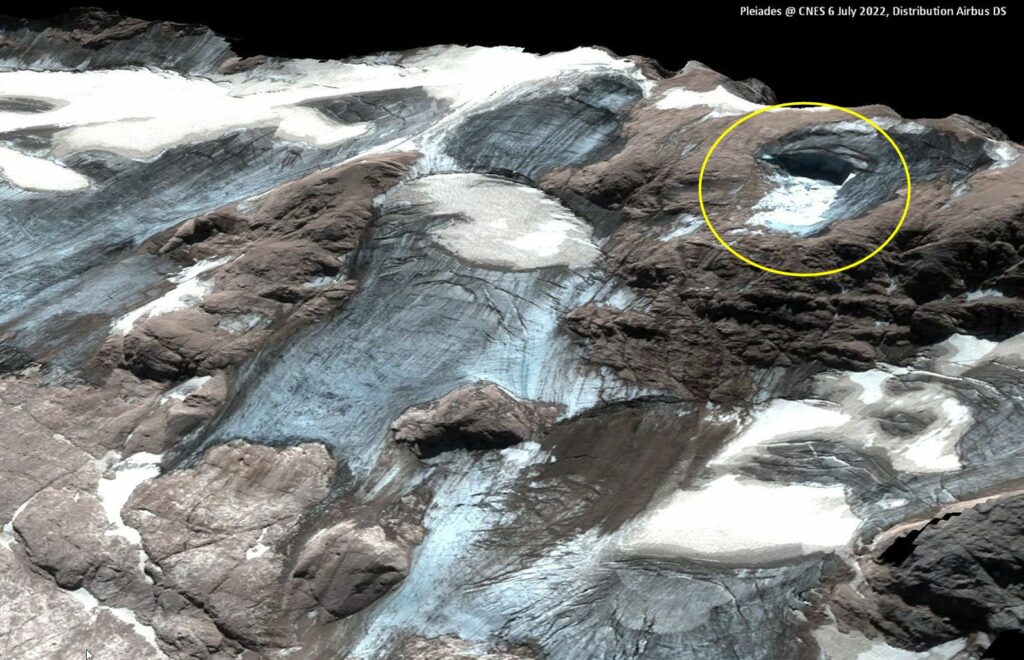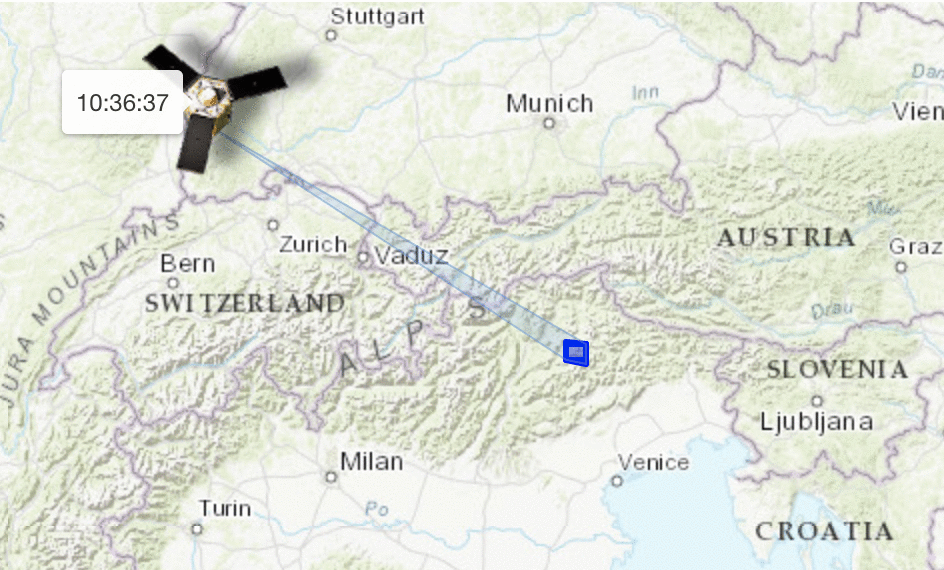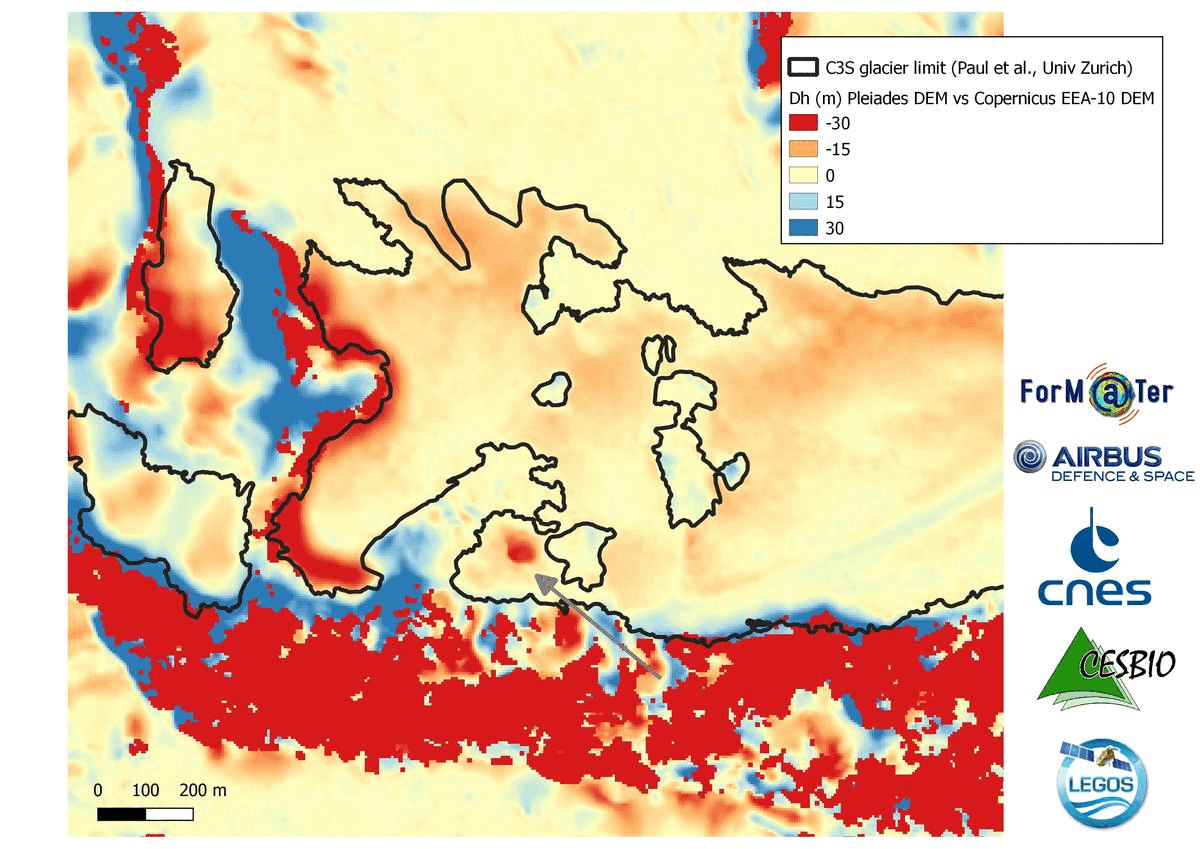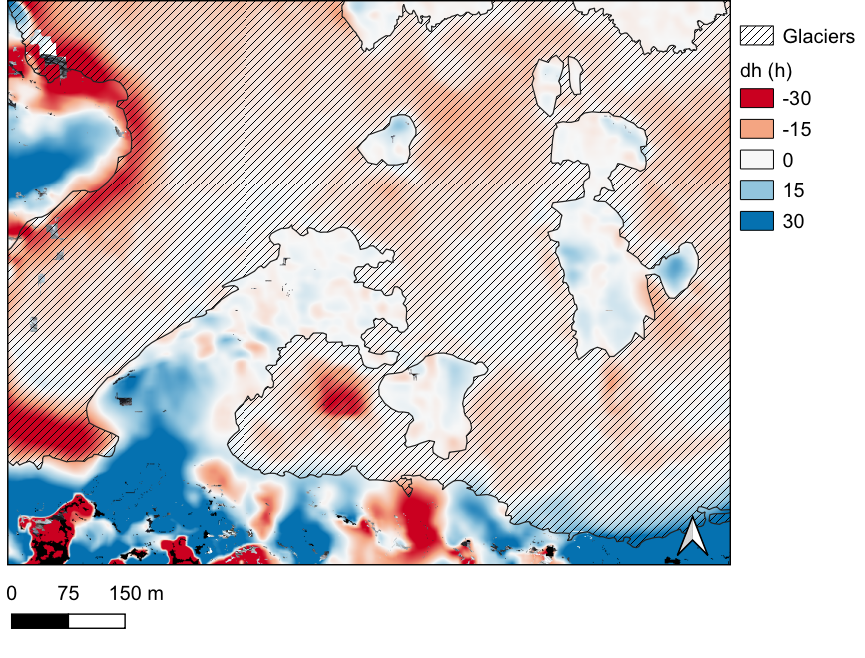Estimation of Marmolada glacier collapse volume using Pléiades imagery
The deadly Marmolada glacier collapse happened on 3 July 2022. On 6 July 2022, Pléiades 1B (CNES, Airbus DS) acquired a clear-sky stereo pair of the area. From these images we could estimate a detached volume of ice of 65’000 ± 10’000 cubic meters.


Method
First, a digital elevation model (DEM) was generated from Pléiades stereo images with the Ames Stereo Pipeline (ASP) and with the online tool DSM-OPT provided by ForM@Ter (with MicMac photogrammetry software under the hood). Then, the DEM was aligned on the EEA-10 Copernicus DEM. Since the EEA-10 DEM was acquired between 2011 and 2015, the elevation difference also includes the glacier thinning that occurred before the collapse. This elevation change was estimated by averaging the elevation changes around the detached area where the ice was still present. The remaining elevation change (up to 20-25 m) is due to the collapse.


Results
By integration over the detached area, we obtained a detached volume of ice of 61’000 m3 (with ASP DEM) and 68’000 m3 (with DSM-OPT DEM), hence our final estimate of 65’000 ± 10’000 of cubic meters. This is the volume of 26 Olympic swimming pools. Although deadly, this detached volume is relatively modest compared to earlier detachments elsewhere in the globe, that reached volumes up to 1000 times larger (Kääb et al. 2021).
In addition, we can estimate that the rupture is about 80 m wide and 20-25 m high.



The images were acquired in emergency mode thanks to the Cellule d’Intervention et d’Expertise Scientifique et Technique nouvelle génération (CIEST²) via ForM@Ter, sponsored by CNES. Pléaides images are distributed by Airbus DS.
Authors
Etienne Berthier, Simon Gascoin
Information also presented on: Estimation of Marmolada glacier collapse volume using Pléiades imagery – Séries Temporelles (obs-mip.fr)

















